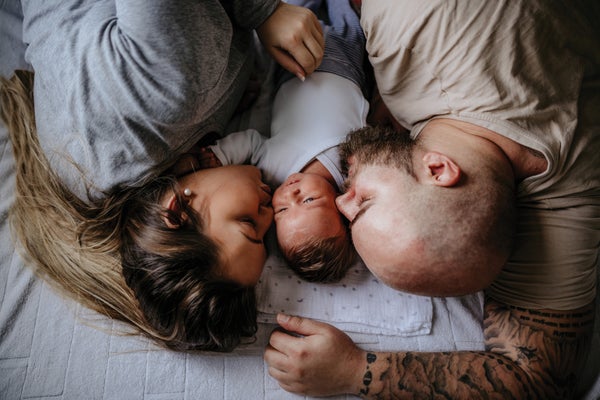Tiny Babies Who Can Smell Their Mother Recognize Faces Better

October 15, 2024
2 min read
Tiny Babies Who Can Smell Their Mother Recognize Faces Better
A smell’s effect on facial recognition is key at first—but decreases as a baby’s eyesight improves

StefaNikolic/Getty Images
Babies experience a torrent of sensory information from the moment they are born. Knowing nothing about the world, they must learn to sort this deluge into categories of things—especially faces. “Faces are one of the most relevant visual signals babies start to learn during the first month,” says Arnaud Leleu, a cognitive neuroscientist at the University of Burgundy in France.
Researchers are still working out how infants use various senses for this recognition: Newborns categorize faces better if the visual image is accompanied by a voice, for example. And evidence suggests babies may also use smell. “We knew babies can combine their senses,” says Tessa Dekker, who studies visual development at University College London. “But it wasn’t clear if this applied to smells, which aren’t as linked to specific events because they operate quite slowly.”
In a recent study in Child Development, Leleu and his colleagues confirmed that infants’ face perception is aided by their mother’s body odor—and they found that the influence of smell declines as babies grow. The findings expand scientists’ understanding of the role that multisensory perception plays in early learning.
On supporting science journalism
If you’re enjoying this article, consider supporting our award-winning journalism by subscribing. By purchasing a subscription you are helping to ensure the future of impactful stories about the discoveries and ideas shaping our world today.
The team used electroencephalography to record the brain activity of 50 infants between four and 12 months old while the babies watched a stream of six images per second. Each sixth image was a human face, and the others were animals or objects. The researchers expected that if the babies were devoting special attention to faces, there would be a once-per-second activity spike corresponding to their appearance—a so-called face-selective response—from electrodes placed over brain regions involved in visual processing. They also gave the babies T-shirts that were clean and ones infused with their mother’s body odor.
Overall, face-selective responses increased in strength and complexity with age. But the team also found that the mother’s scent enhanced responses to faces in the youngest infants and observed that the effect progressively decreased in older babies. “This could mean young babies rely more on their mother’s scent because their ability to identify faces using vision alone is still developing,” Dekker says. Visual ability is known to be poor at birth, whereas smell develops relatively early.
The findings highlight the importance of multisensory stimulation early in life. “To help infants learn, we should use all the senses,” Leleu says. “The way we start to recognize things with our senses is the building block to developing concepts, language, memories.” He is continuing to investigate the extent of smell’s effect on perception, including in other age groups. He says he’s finding that if a recognition task is made difficult enough, even adults recruit their noses to help. “It works for faces and other objects,” Leleu adds. “We found an effect using pictures of cars and gasoline odor.”




